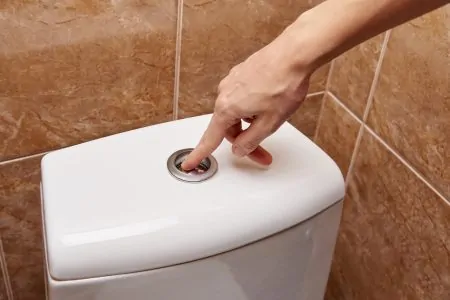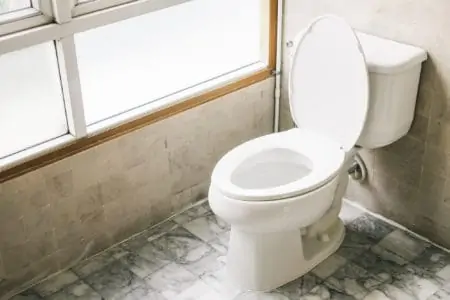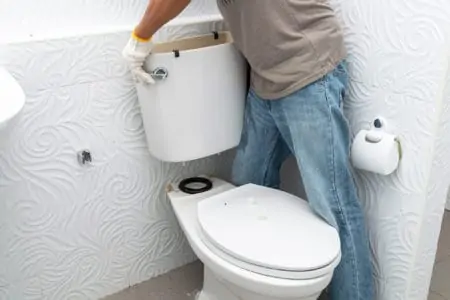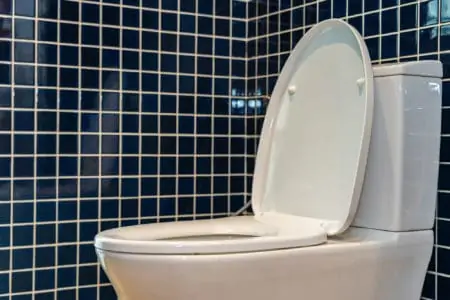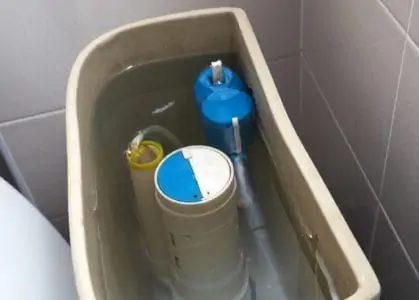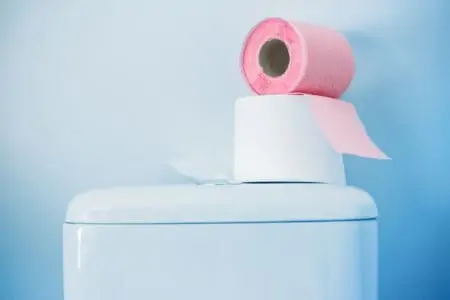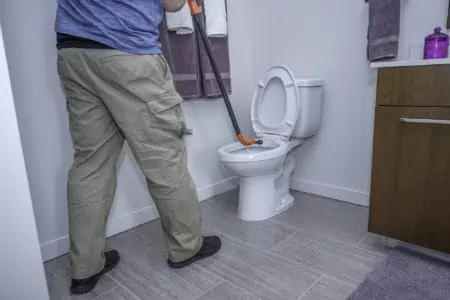We are fortunate that more people have access to running water and modern plumbing than ever before. One of the most important of these innovations is a flushing toilet, which removes waste from your home in seconds.
We flush our toilets multiple times per day but you might not give much thought to how they actually work. Although they are all designed for the same purpose, there are several different flushing systems used in toilets.
In this article, we will explore some of the current most popular types of toilet flush systems. These range from a standard ballcock flush commonly used in homes to the sealed vacuum flush found on airplanes.
Key Takeaways
- Ballcock Flush System: Common type using a floating ball and plunger for water control.
- Siphon Flush: Popular in the US, creates a vacuum seal and gurgling sound when flushing.
- Flapper-Flush Valve: Similar to ballcock flush but uses a flapper instead of a ball.
- Gravity Flush System: An older system that uses gravity to create flushing pressure.
Types of Toilet Flush Systems
Ballcock Flush System
The ballcock flush system is one of the most commonly used types. It uses a ballcock and a plunger that fills the toilet’s water tank to a specific level.
A ballcock is a floating ball attached to a rod. As the rod moves, it also moves the plunger, which allows water to either fill the tank or empty it.
The ballcock depends on the water level — if there is insufficient water, it won’t function properly. There can also be issues if the shut-off valve is set too high. This will mean the water won’t shut off, allowing it to flow into the overflow tube.
Pros
- Easily replaced
- Works effectively
Cons
- Prone to failure
Siphon Flush
Siphonic flush systems are very common in the United States. They are easy to recognize as the toilet’s water level will rise quickly before the toilet flushes.
There is also a signature gurgling sound caused by the vacuum seal being broken. These flushes are activated by a button at the top of the tank that opens the flush valve, allowing the water through the bowl.
A common problem with this type of flush system is the trapway. The trapway is long and narrow, so it’s prone to clogging. It’s recommended to keep a plunger close at hand in case a clog was to happen.
Pros
- Leaves bowl cleaner
- Powerful flush
Cons
- Prone to clogs
Flapper-Flush Valve
A flapper-flush system works similarly to a ballcock flush, but it is controlled by a flapper rather than a ball.
The flapper is filled with air and floats. When you trigger the flush lever on the tank, the flapper is pulled out of its seat by a chain and allows water to flow from the tank to the bowl.
As the water level drops, the flapper won’t be able to float and falls back into its seat. This allows the tank to refill, readying it for the next flush. There are newer versions of this type that offer dual flushing — one type for solids and one for fluids.
Pros
- Simple system
- Easy to maintain
Cons
- Can be slow to refill
Pressure-Assisted System
Pressure-assisted systems rely on water pressure instead of gravity, which is used by most toilets.
These are commonly used in commercial settings as they provide a powerful flush that prevents clogging. This also makes them easy to maintain and leaves the bowl cleaner.
Presure-assisted flushes are activated when you press a button or lever, which releases the air pressure that builds as water enters the tank. When the air pressure is released, the water moves down with great force, removing the waste from the toilet.
Pros
- Keeps the bowl clean
- Very powerful flush
Cons
- Loud flush
Gravity Flush System
The gravity flush system is one of the oldest systems but is still popular in some settings. It releases water that is elevated above the bowl, creating flush pressure when it is released. The pressure then forces the waste from the bowl and into the trapway.
After each flush, a siphonic effect clears the bowl before refilling it — this ensures nothing becomes trapped. As there are no complicated mechanisms, it is easy to perform repairs and replacements. There also won’t be any loud noises because gravity is the primary force at work.
Pros
- Quiet
- Powerful
Cons
- Clogs more easily than pressure-assisted flushes
Double Cyclone System
The double cyclone system is one of the newest flush types. Originally created by the Toto toilet company, it is becoming increasingly popular.
It uses two nozzles that are supported by a propulsion system, allowing more water through the tube. As a result, it creates a very powerful siphoning action with a more efficient flush.
Despite its name, a double cyclone system is actually relatively simple. It utilizes some gravity flush mechanisms during the process.
Pros
- Powerful while using less water
- Simple mechanism
Cons
- Can be difficult to find replacement parts
Dual System
Dual flush systems are designed to remove solids and liquids differently, depending on how you press their controls. They usually have separate buttons for solids and liquids – but some have a single button that can be pressed on one side or the other.
They are designed to reduce water waste by only using the necessary amount for the type of waste in your toilet. Fluids don’t require as much water to be flushed effectively, but more force is needed to push solid waste down the toilet’s trapway.
Pros
- Reduces water waste
- Ideal if you have a limited water supply
Cons
- Not very common in the United States
Washdown Toilet
Washdown toilets are mostly seen in Europe and rarely in the US. They are often compared to a regular siphon toilet but have a bigger trapway, making it easier for water and waste to leave your bowl.
There are no complicated valves or floating balls in this system. It uses the water’s weight and gravity to flush the toilet. This also means it operates quietly.
Pros
- Generally clog-free
- Flushes quickly
Cons
- Can leave skid marks in your toilet
Rear Toilet Flush System
Rear toilet flush systems are less common and are generally used in tight spaces where there is no room to install a traditional cistern. Although this means a more complicated installation, they are ideal for achieving a sleek, minimalist look as the toilet’s plumbing and fixtures are concealed.
The main issue is that these toilets are fitted onto the wall and can become loose with time, causing leaks. This means they require extra maintenance and the process is more complicated.
Pros
- Minimalist modern look
- Powerful flush
Cons
- Installation and maintenance are more complicated
